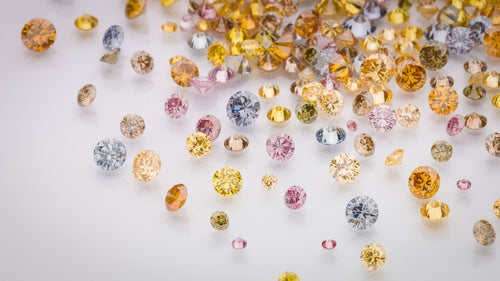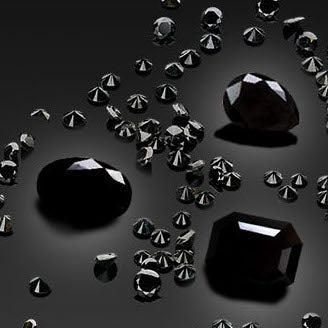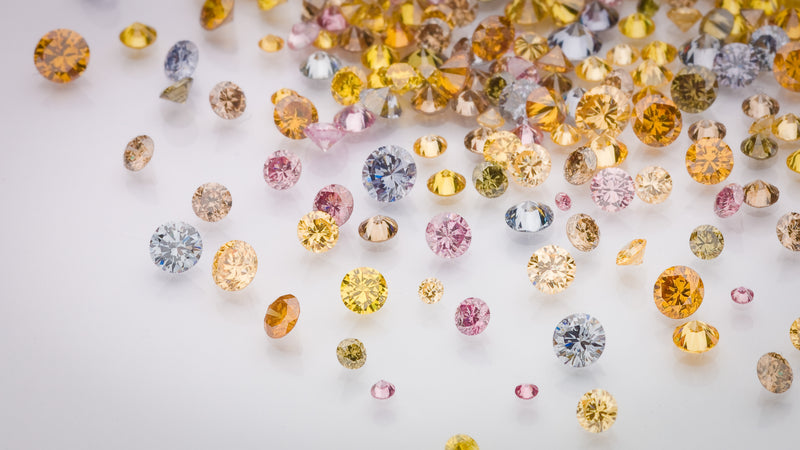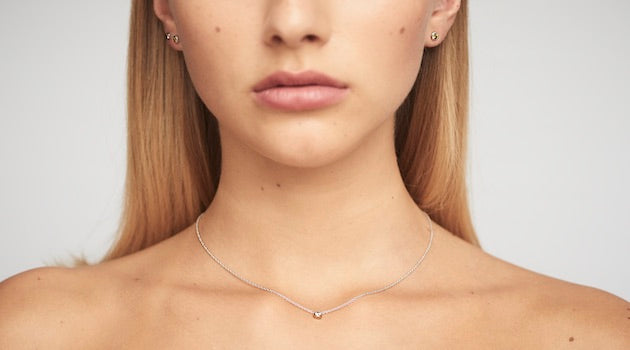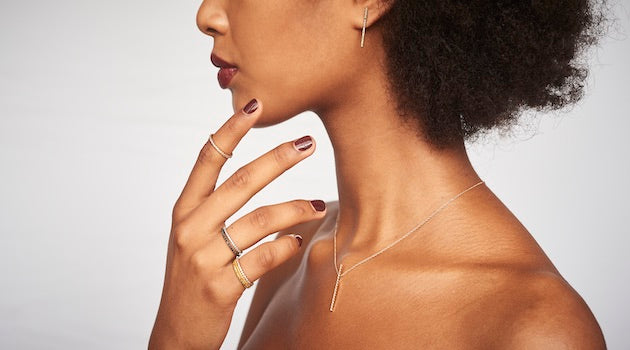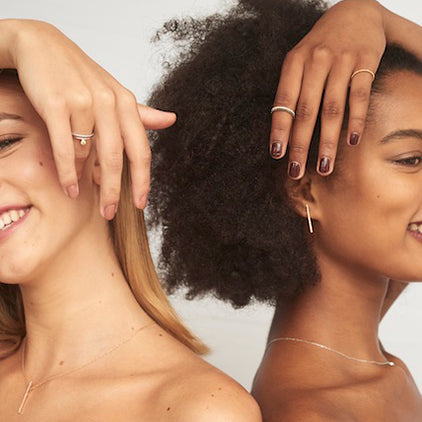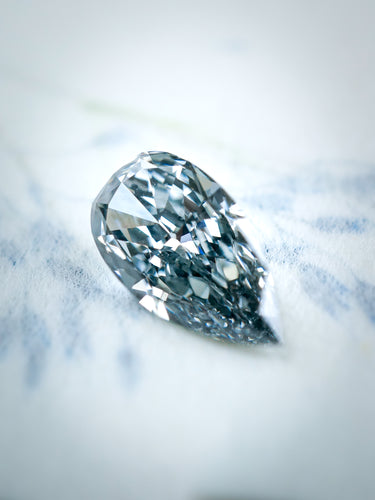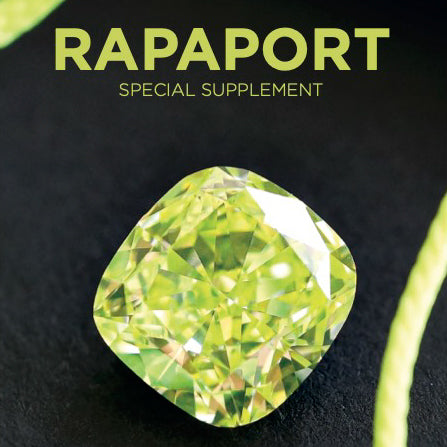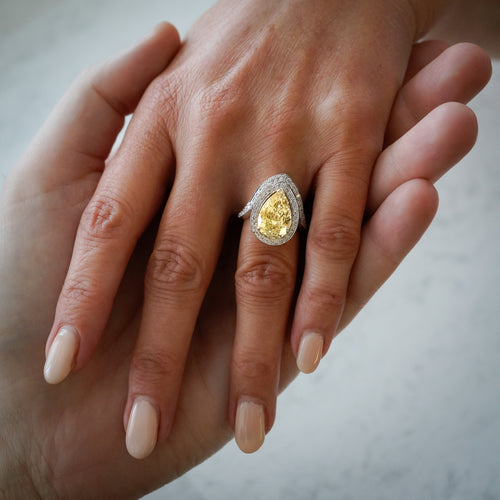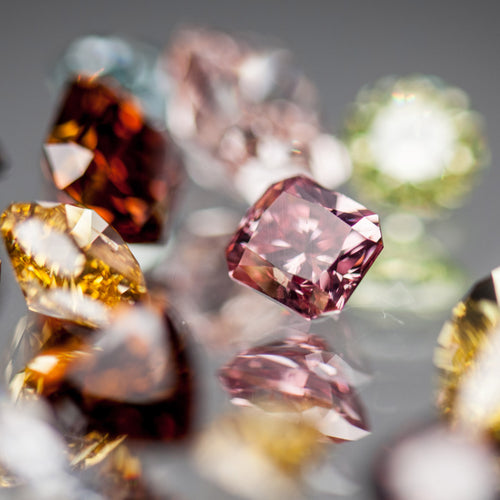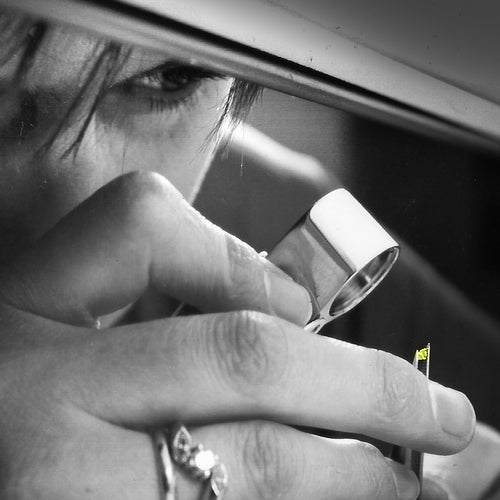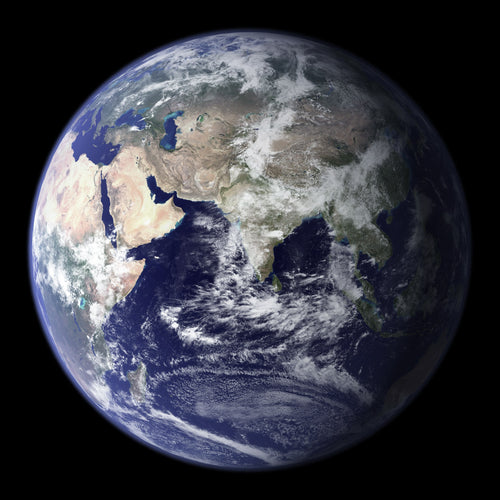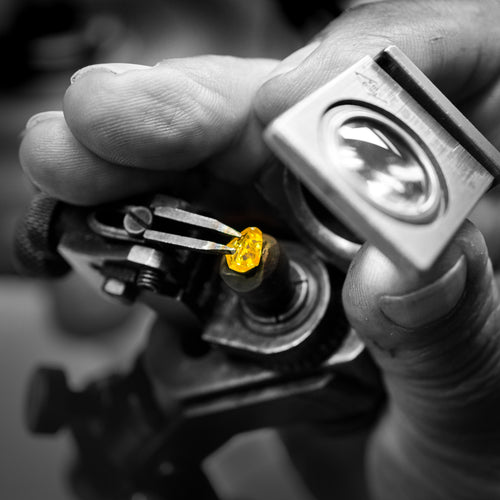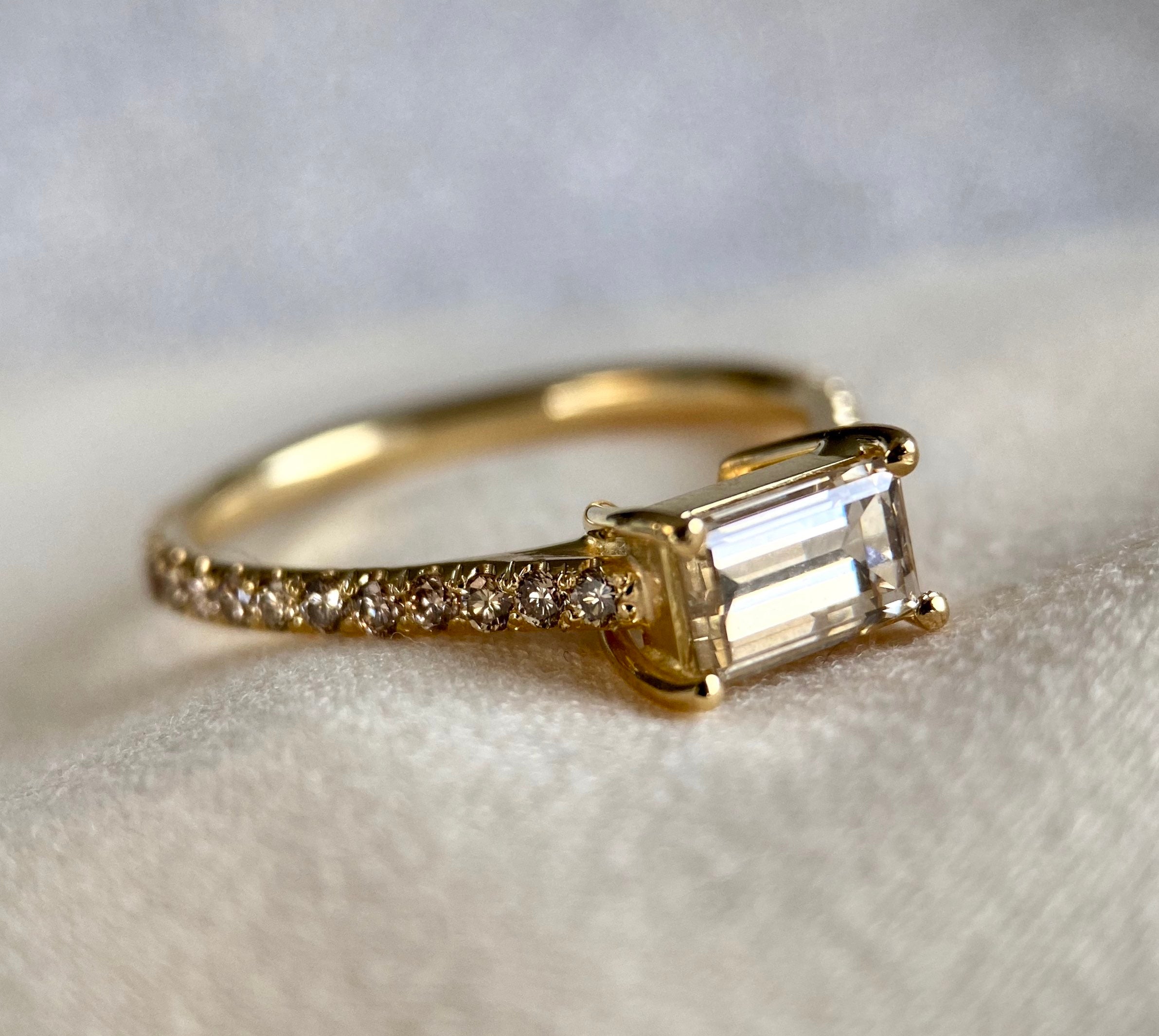

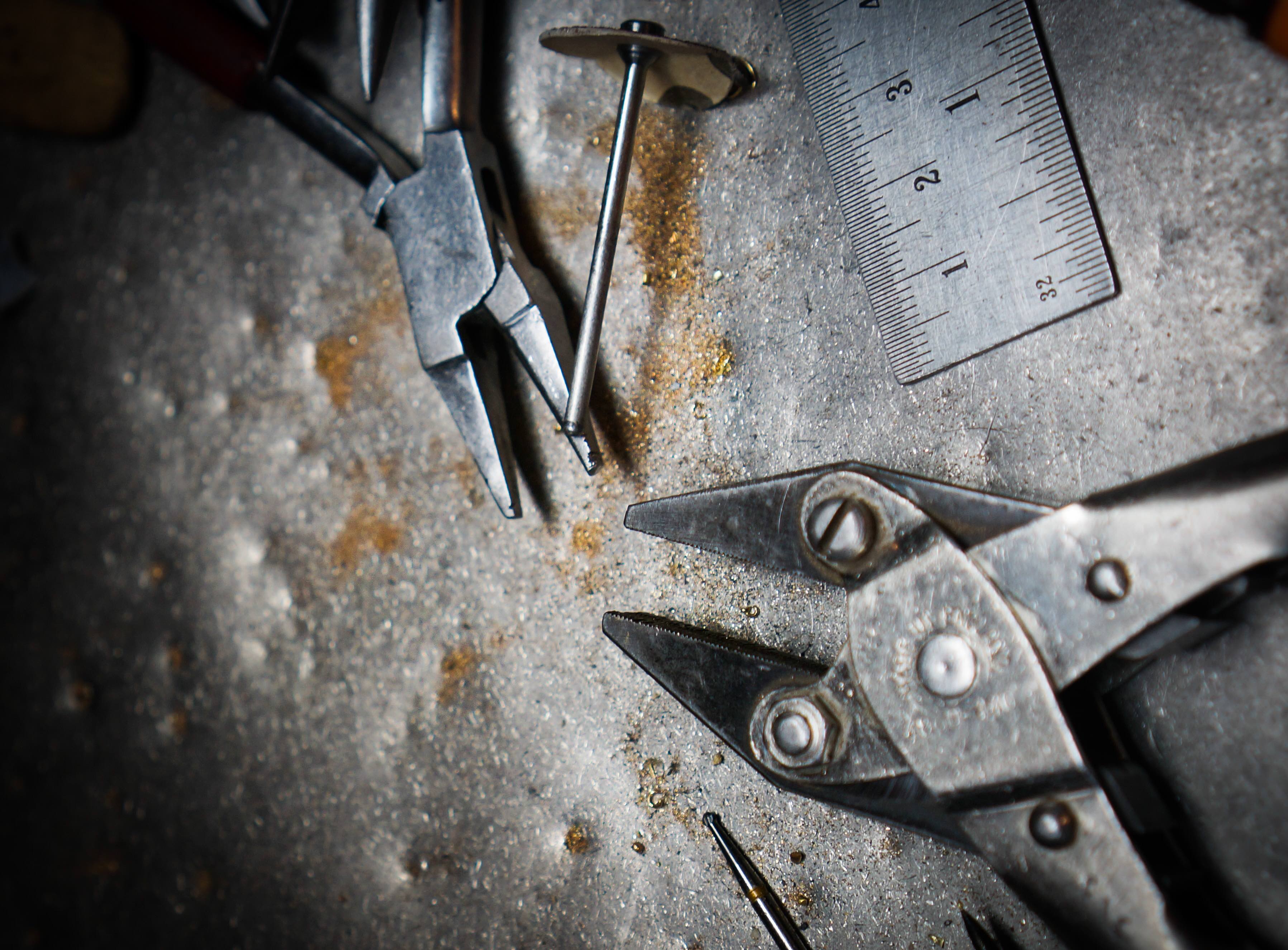
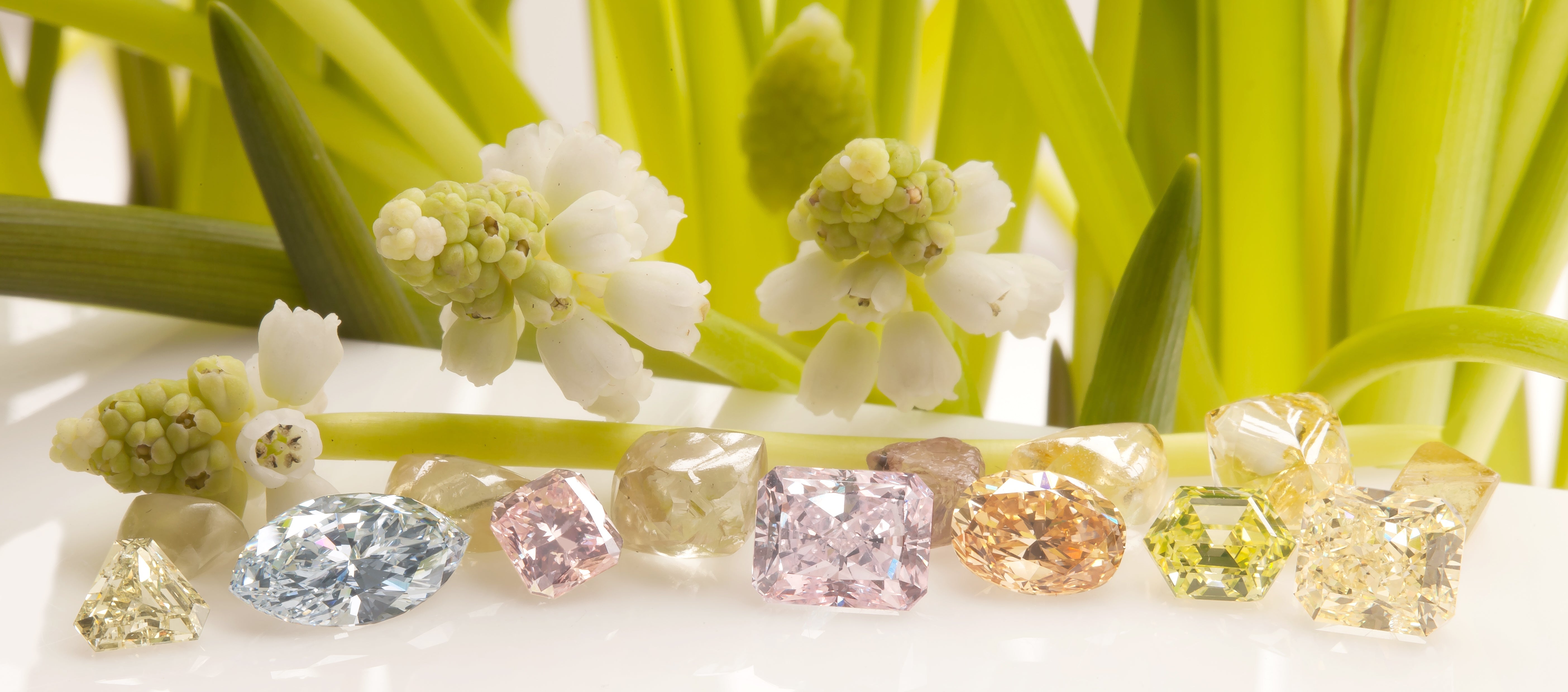

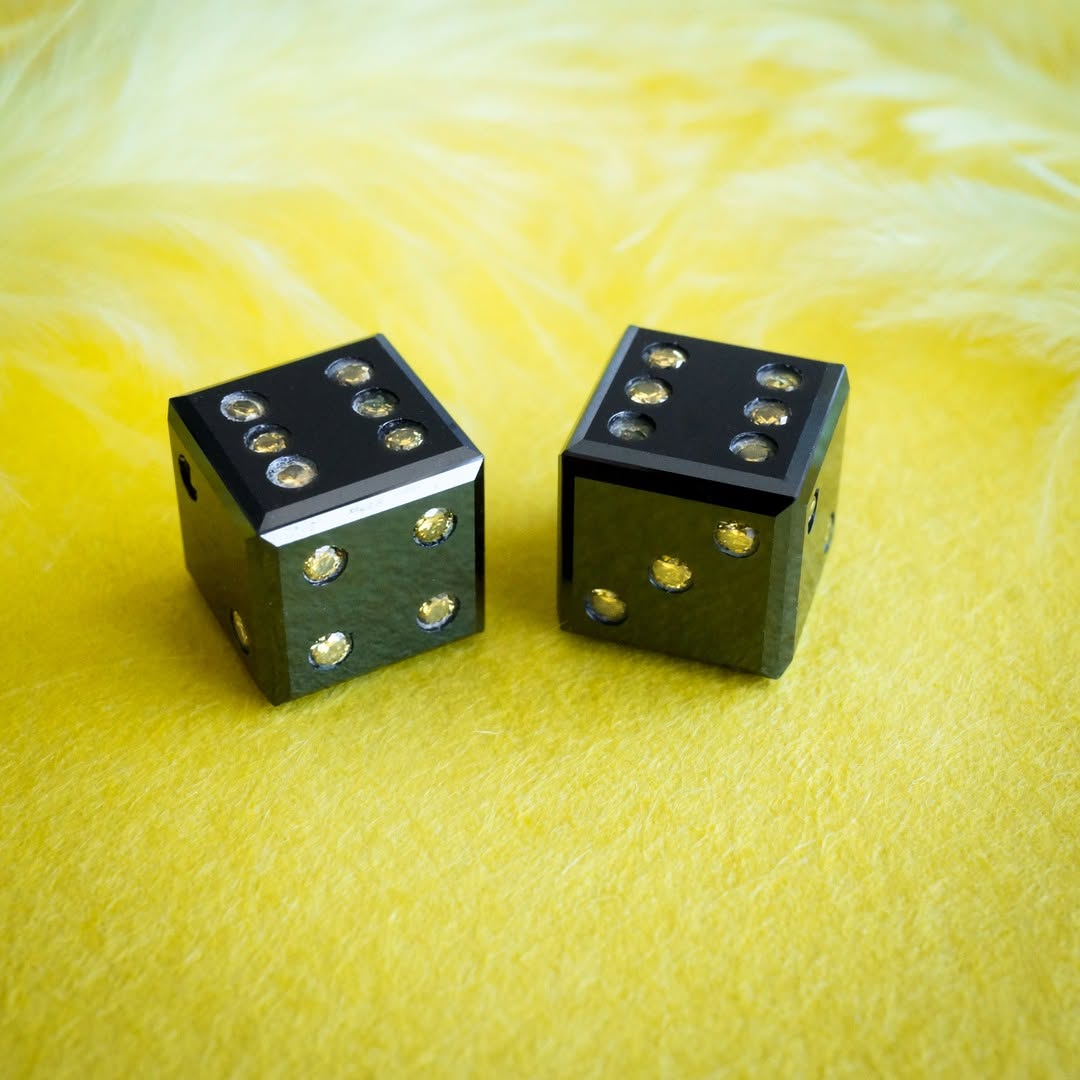
4 C’s Fast Track: Understanding Carats
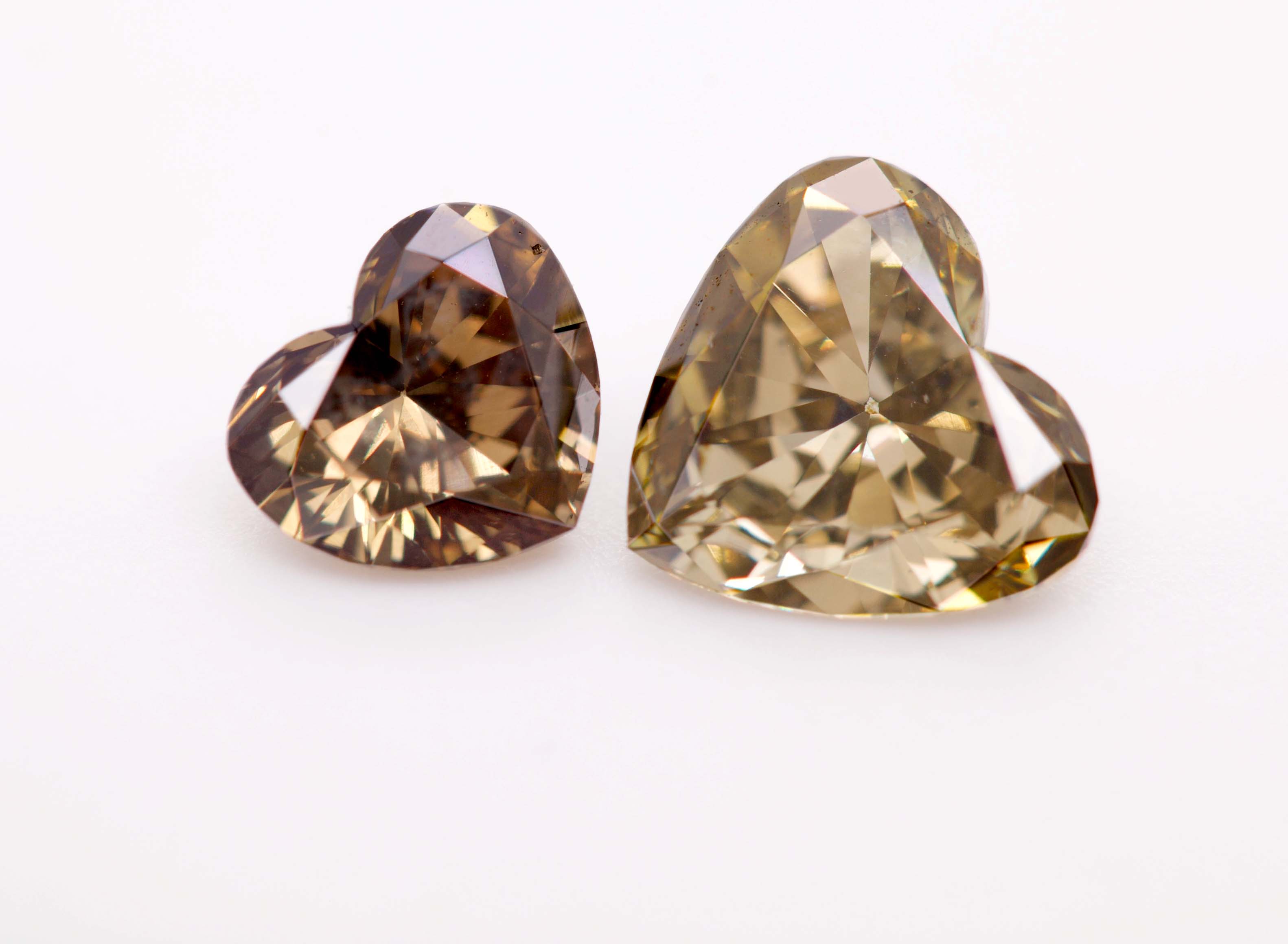
Welcome to the first delivery of our new blog series, “4 C’s Fast Track”, where we take a deep dive into the 4C’s of Diamonds—Color, Clarity, Cut, and Carats—and give you all the information you need to understand them, in a clear and straightforward language. So the next time you’re shopping for natural color diamonds, you can confidently ask questions and make an informed purchase.
In this blog, we’ll cover:
-
What are Diamond Carats?
-
How Do Carats Impact Value?
-
Carats in Color Diamonds
-
Tips To Make Your Diamonds Look Bigger
The Origin of Diamond Carats
Carob seeds were used as weight units in ancient times.
Carats are the international unit to measure diamonds, pearls, and other gemstones.
1 metric carat = 200mg or 0.20g
The name comes from the ancient practice of measuring different precious materials—such as gold and diamonds—weighing them against carob seeds. Carob seeds were believed to be very consistent in weight, although this wasn’t the case.
Carats are not the only way to express diamond weight, though. You might have heard a jeweler describing a diamond by its ‘points.’ It’s common practice in the industry to use a points system, where 1 carat is subdivided into 100 ‘points.’ This allows for precise measurement of gems under 1 carat. A ’25-pointer’, for example, refers to a 0.25 carat diamond. A 50-point diamond would equate to half a carat, and so on.
In diamond jewelry descriptions, you’ll probably see it abbreviated as ct when listing the carat weight of a center stone. Another abbreviation you might find is ctw or tcw, which stands for carat total weight, or total carat weight, respectively. This is particularly helpful in disclosing the total weight of all diamonds used in a single piece of jewelry.
4.50 ctw Olive Diamonds Pavé Ring by Langerman
For example, the 18kt yellow gold ring above contains many pavé-set Olive diamonds of varying carat weights. In this case, it’s easier to explain that all the diamonds in the piece have a combined carat weight of 4.50.
3 Things You Should Know About Carats
Carat Weight Size Comparison in Round Brilliant Cut Diamonds.
People often mistake carats for a size measure, but there is a correlation between carat weight and diamond size. After all, the heavier an object is, the larger it probably is too. But there are some things you should know.
-
Diamond Shapes Carry Their Weight Differently
Lengthy cuts like this Fancy Yellow marquise diamond, typically look bigger.
Carats will give you an idea of how large a diamond is, but you should know weight is distributed differently among the various diamond shapes. The Asscher cut, for example, tends to hold more weight at the pavilion, therefore, looking slightly smaller when compared to a round-cut of the same carat weight. On the other hand, elongated cuts create the illusion of a larger size. A marquise-cut diamond will likely appear bigger than a round-cut of the same carat weight.
-
Diamonds Of The Same Carat Weight Might Not Have The Same Dimensions
This matching pair of radiant cut Lime diamonds look alike but vary slightly in carat weight and size.
Diamond cuts have varying proportions, such as the girdle’s thickness, the pavilion’s depth, or the ratio between length and width. This means that two diamonds of the same carat weight and cut might not be the same size.
For example, if you look at two 1 ct round-cut diamonds, you can be sure they both weigh 0.20g, but they could have different diameters. These millimetric variations aren’t always perceptible but should remind you that carats are not equivalent to specific sizes.
Explore Our Selection of Natural Color Diamond Sets for Jewelry
-
Carats Are Not The Same As Karats
Three-stone Yellow diamond engagement ring in 18kt yellow gold.
Because they share the same origin—the mighty carob seed—both Carats (ct) and Karats (K or kt) are spelled similarly. But they measure completely different things.
Karats express purity in gold alloys. At Langerman, we work with 18kt gold, an alloy containing 18 parts or 75% pure gold mixed with other metals to create yellow, white, or rose gold.
Carats and Fancy Color Diamonds
Natural Champagne Diamonds in Marquise and Oval Shapes.
Higher carat weight is probably one of the most sought-after features when looking for a colorless diamond. And a defining factor in determining value as well. However, for natural color diamonds, color is the most important out of the 4 C’s.
0.38 carat Pear-shaped Fancy Gray Green Diamond.
When cutting colorless diamonds, preserving carat weight is top priority, but weight might be sacrificed to achieve a more intense color when cutting natural color diamonds. Fancy Vivid colors command higher prices than light, unsaturated hues. You might find a 0.25 carat Raspberry diamond to cost the same or even more than a 1 carat Baby Pink diamond.
Fancy Intense Purplish Red 0.50 carat Argyle diamond.
Natural color diamonds are hard to come across and finding them in larger sizes is also rare. Yellow, Chocolate, or Olive diamonds can sometimes reach 10 carat. But for other colored diamonds, it’s very difficult to find them above 1 carat.
The Best Design Trick To Make Your Diamond Look Bigger
There are some ways to create the illusion of a larger center stone, and at Langerman, we know all the techniques to make color diamonds stand out.
Impressive 4.50 ct Pink pear cut diamond set in 18kt rose gold with a delicate pavé of pink diamonds.
Surrounding your diamond with a row of smaller diamonds increases the light reflected back on the main stone.
This radiant cut Fancy Yellow diamond is surrounded by a double halo and set in 18kt yellow gold.
Diamond halos are the best design feature to make your center stone appear larger than its actual carat weight.
Champagne Diamond Solitaire Engagement Ring with Diamond Halo.
Contact us to design a stunning, natural color diamond jewel with the best combination of the 4C’s for your budget and taste.
